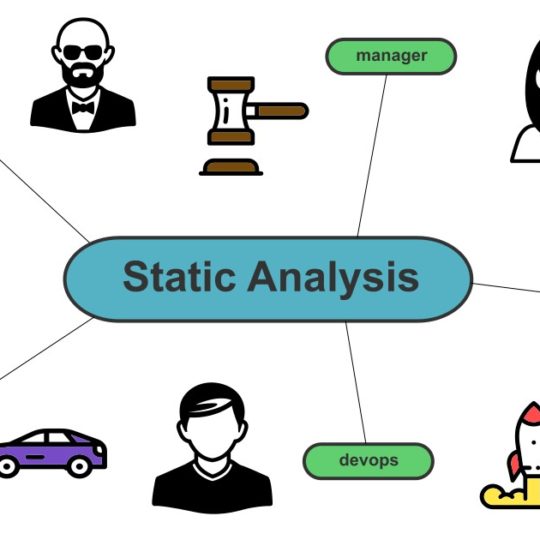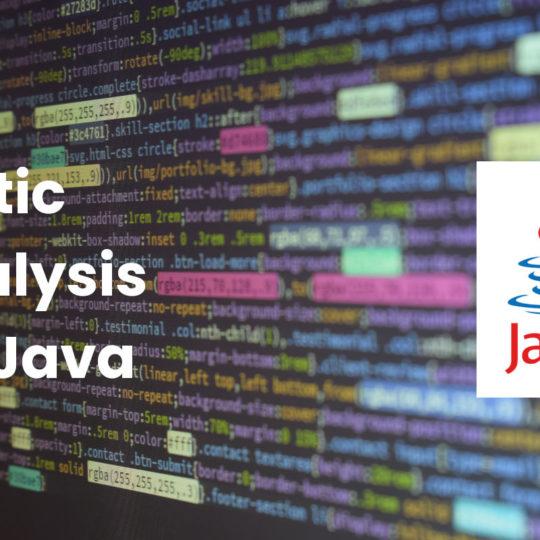Static analysis is a widely used technique for detecting potential errors and vulnerabilities in software code. However, static analysis is not a silver bullet. As a software developer, it is necessary to understand what static analysis cannot find to use this technique effectively. There are several types of errors and issues that static analysis tools may not be able to detect, from logic and runtime issues to security vulnerabilities and user interface problems. In this article, we will explore some of the limits of static analysis tools and discuss why it is essential to use various testing methods to ensure the quality and reliability of software applications.
To learn most about the benefits of static analysis, read Why is static code analysis important?
While static analysis tools are effective at catching syntax problems and simple coding mistakes, they have several constraints. For example, they cannot detect runtime issues that only occur during execution and may miss more complex security vulnerabilities like timing attacks or race conditions. Additionally, static analysis cannot identify contextual matters that require a human understanding of the code’s purpose and function, such as logic errors or design flaws that don’t necessarily violate any coding standards or syntax rules. Also, integration issues, third-party library problems, and human errors can escape the notice of static analysis tools. Understanding these limitations is essential to using static analysis tools effectively and ensuring the quality and reliability of software applications.
Code Logic Errors
When a program design or implementation contains a flaw, the code may behave differently than expected, leading to logic errors. Unfortunately, detecting logic errors can be difficult because the code can still compile and run without crashing yet produce unintended results. For example, a logic error in a banking application that calculates interest could result in incorrect interest rates applied to accounts, which can have severe implications for the bank and its customers.
Static analysis tools focus on the code’s structure and syntax, making them unable to detect logic errors due to intended behaviour. Even if the code is technically sound and free of syntax errors, it can still have logic errors that only surface during runtime due to incorrect assumptions about user input or unexpected interactions with external systems. To catch logic errors, developers must use other testing methods, such as unit or system testing, focusing on the application’s behaviour and intended outcomes.
Runtime Errors
Runtime errors happen when a program experiences issues during execution, such as a divide-by-zero error or a null pointer reference. Detecting runtime errors can be challenging because they may only arise under certain conditions or specific inputs. For example, a program that reads data from a file may encounter a runtime error if the file is missing or corrupted.
Static analysis tools cannot guarantee a code’s freedom from runtime errors because they only analyze its structure and syntax, not its execution. Consequently, a program may compile without issues and function correctly but still encounter runtime errors under specific circumstances. Factors that can cause runtime errors include incorrect assumptions about input data, race conditions, and resource exhaustion. To address runtime errors, developers must use additional testing methods, such as runtime analysis tools and debugging techniques focusing on the program’s execution.
Performance Issues
A program’s execution may become slower than expected or consume more resources than necessary due to various factors such as inefficient algorithms, memory leaks, or excessive disk I/O. Unfortunately, detecting performance issues can be complex because they may only become apparent when the program runs under specific conditions. For instance, a program that performs well with small datasets may encounter performance issues when processing larger datasets.
Static analysis tools cannot predict how it will perform under different conditions, making it impossible to detect performance issues at scale. While these tools can identify some code that could cause performance issues, addressing such problems requires additional testing methods, such as load testing, profiling, and benchmarking, focusing on the program’s performance characteristics. These testing methods can help identify performance bottlenecks, allowing developers to optimize the code for better performance.
Security Vulnerabilities
Security vulnerabilities are defects in software that attackers can exploit to gain unauthorized access to systems or data. Various factors create these vulnerabilities, such as improper input validation, buffer overflows, or insecure network communications. Security vulnerabilities can be challenging to detect because they may only be exploitable under particular conditions.
Static analysis tools may not be able to detect all security vulnerabilities because they focus on the code’s syntax and structure rather than its security properties. While static analysis tools can identify some code likely to contain security vulnerabilities, they cannot guarantee that the code is free of these issues. To detect and address security vulnerabilities, developers must use additional testing methods, such as penetration testing and threat modelling. Identifying vulnerabilities and other security issues using these testing methods enables developers to fix them before attackers exploit them.
User Interface Problems
User interface problems are defects in software that affect the user experience or usability. Various factors, such as poor layout or confusing navigation, can cause these problems. User interface problems can be challenging to detect because they only become apparent when users use the program.
Static analysis tools cannot predict how users interact with the program in different contexts. To address user interface problems, developers must use other methods, such as usability testing and user research. Ultimately, by combining static analysis tools and user-centred design practices, developers can ensure that their software works correctly and meets its intended users’ needs and expectations.
Integration Issues
Integration issues occur when software components or systems do not work together as expected. For example, integration issues can arise due to differences in programming languages, incompatible data formats, or incorrect assumptions about component behaviour.
Static analysis tools may not be able to detect integration issues because they focus on the individual components’ structure and syntax rather than their interactions. Even if the code is technically correct and free of syntax errors, the features may still have integration issues that only become apparent during runtime. These issues can arise from incorrect assumptions about component behaviour or unexpected interactions with external systems. While static analysis tools can identify areas likely to contain integration issues, they cannot guarantee that the components will work correctly together. To catch integration issues, developers must use other testing methods, such as integration testing, focusing on the interactions between the elements and the system’s overall behaviour.
Business Logic Errors
Business logic errors occur when a program’s implementation does not match the system’s intended behaviour. These errors can be challenging to detect because they may not cause the program to crash or produce an error message. For example, a website that offers discounts based on user membership levels may have a business logic error that applies the wrong discount amount to a purchase. While the website may still function without any visible errors, the incorrect discount calculation can result in revenue loss and damage to the company’s reputation.
Even if the code is free of syntax errors and technically correct, it may still contain business logic errors that only become apparent during runtime. These errors can arise from various factors, such as incorrect assumptions about business rules or unexpected interactions with external systems. To detect business logic errors, developers must use other traditional methods, such as user acceptance and manual testing, focusing on the system’s intended behaviour and outcomes.
Third-Party Library Issues
Third-party libraries can be valuable for developers, providing pre-built solutions for everyday programming problems. However, integrating third-party libraries into a project can introduce new issues and complexities. For example, third-party libraries may have bugs or incompatibilities that can impact the overall application’s stability and performance. In addition, in some cases, integrating a third-party library may lead to licensing or legal issues. Therefore, developers must address these issues before distributing the application.
Static analysis tools may fail to detect all third-party library issues, especially if the analyzed code is in a different language than the libraries. Even if the code is technically correct and free of syntax errors, it may still have issues with third-party library integration that only become apparent during runtime. These issues can arise from various factors, such as outdated libraries, version conflicts, or incorrect usage of the library’s APIs. To catch third-party library issues, developers must use integration testing methods to ensure that the libraries work as expected and that any problems are identified and addressed.
Non-Coding Issues
Non-coding issues can occur during software development and impact the code’s functionality or usability. These issues are not related to the code but result from the development process, the team’s communication, or the user’s requirements. For example, non-coding matters include unclear requirements, inconsistent user interfaces, or inadequate testing.
Static analysis tools cannot detect issues with the development process or user requirements. As a result, while these tools can identify code that does not comply with coding standards, they cannot guarantee that the code will meet the user’s expectations or function as intended. To identify and address non-coding issues, developers must use different methods, such as user testing, requirements gathering, and communication between team members, to ensure the software meets the user’s needs and expectations.
What Static Analysis Cannot Find
In conclusion, while static analysis tools can effectively identify potential coding issues, they are not a panacea for all software development problems. Developers must be aware of the limitations of these tools and supplement them with other methods, such as in-depth testing, code reviews, and user research. By doing so, developers can create higher-quality software that is more resilient to runtime errors, security vulnerabilities, and further issues that could arise. It is the responsibility of developers to ensure that their code is functional but also reliable, secure, and user-friendly. By using a combination of methods and approaches, developers can achieve these goals and create software that meets the needs of their users and stakeholders.
Now that you know what static analysis cannot help with, there are some further considerations you must know. Continue to read What are the limitations of static code analysis? to learn more.






